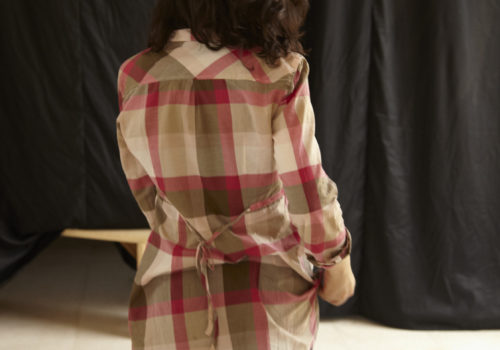Christian Caujolle: This is your second time serving as curator of the Bamako Biennial. What has changed since your first term?
Michket Krifa : We are trying to develop something that was evident two years ago and that has only evolved since: the professionalization of African photography. There has been a swell of African critics and journalists, young curators, new inter-African networks and exchanges, and festivals devoted to the continent. We have also seen the emergence of a market for collectors of African photography.
From a personal perspective, I have more experience in the conception and—through working in close collaboration with a small, seasoned team—execution of an increasingly important event in international photography.
Christian Caujolle: You are actually one of two curators. How do work together to program the festival?
Michket Krifa : We complement each other. We each have our own professional and life experiences, but with points in common. We share a politically engaged outlook and similar artistic sensibilities. Being African, I have an internal, almost innate vision of “the South,” an otherness that I have worked hard to champion and defend. Laura, for her part, complements my perspective with her own perspective as an “outsider.”
We consider how to approach a theme, exchanging our different points of view, then we each make artistic proposals which evolve little by little into a shared project that we agree on and then bring to completion together. Naturally, each of us has our own taste and sensibility, but in the end we create a program that we both believe in.
Christian Caujolle: So much has happened in the North and South of the continent over the past two years. Has this had an effect on your choices?
Michket Krifa : It’s strange, because we chose this theme long before this year’s events. But we could see intimations of them prefigured in the work of a few visionary artists. Of course we took current events into consideration insofar as they were echoed across their work.
Christian Caujolle: The Pan-African exhibition seems like the festival’s centerpiece. Does it represent a continental unity, as its name suggests?
Michket Krifa : The Pan-African exhibition was the result of an open call for entries. This year, from a pool of 360 candidates, we selected 45 photographers and 10 videographers. Video is especially prevalent this year. More than continental unity, it is the plurality of perspectives that is interesting.
There is a will to create inter-African exchange networks that not only reintegrate diaspora communities, but also present a panorama of African artists working around a single theme.
Christian Caujolle: What makes African photography distinctive?
Michket Krifa : Perhaps it isn’t distinctive, but like many impoverished countries and regions, you find a deep-seated connection with life. There is a political dimension and a poetic dimension where aesthetics and ethics are closely linked. The ancient and modern temporalities come together, and their meeting gives rise to forms that are original, fascinating and contemporary.
Christian Caujolle: If you could select only one artist from this Biennale, who would it be? And why?
Michket Krifa : We can talk about that after the awards ceremony.
















